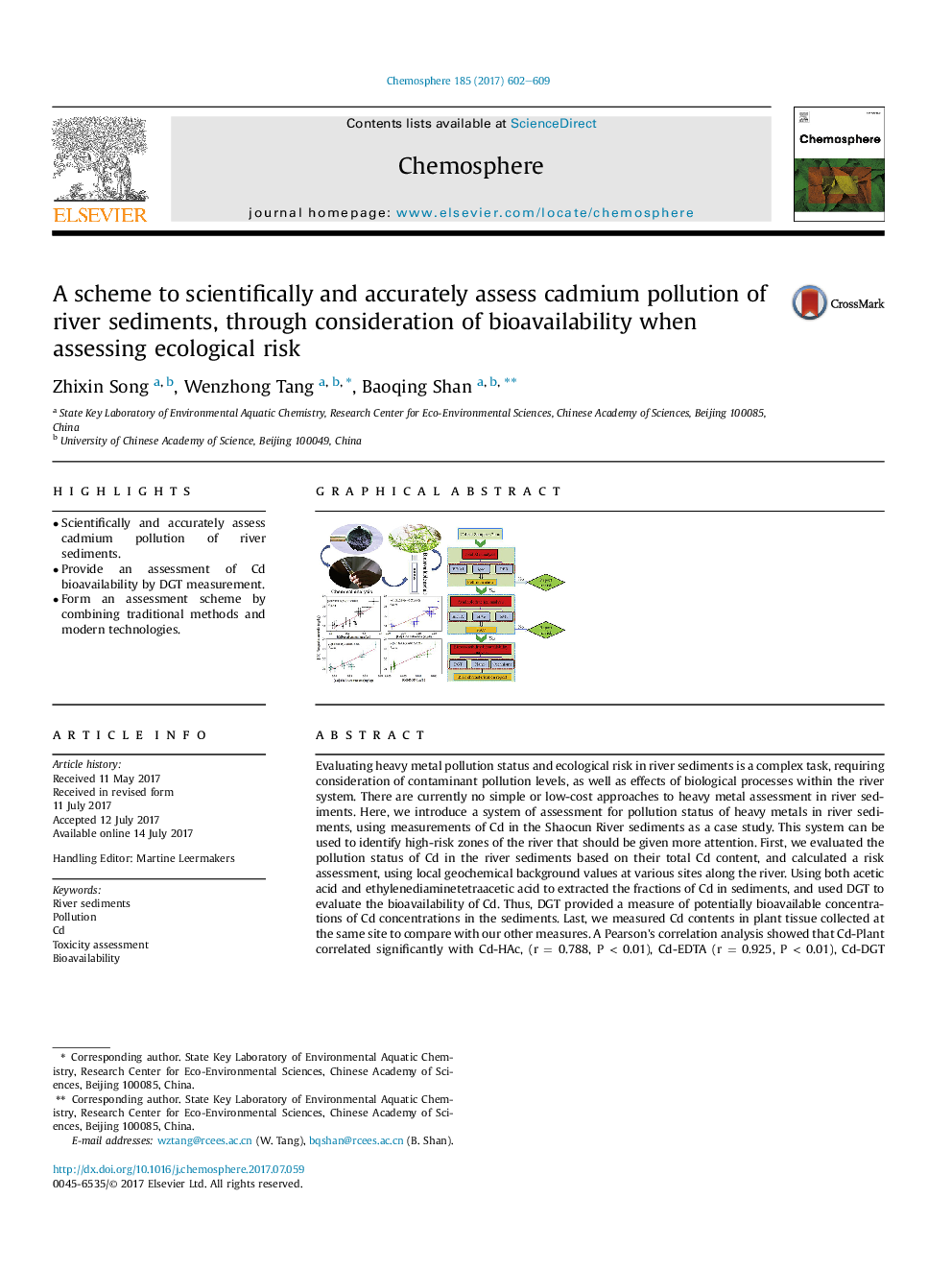| Article ID | Journal | Published Year | Pages | File Type |
|---|---|---|---|---|
| 5746753 | Chemosphere | 2017 | 8 Pages |
â¢Scientifically and accurately assess cadmium pollution of river sediments.â¢Provide an assessment of Cd bioavailability by DGT measurement.â¢Form an assessment scheme by combining traditional methods and modern technologies.
Evaluating heavy metal pollution status and ecological risk in river sediments is a complex task, requiring consideration of contaminant pollution levels, as well as effects of biological processes within the river system. There are currently no simple or low-cost approaches to heavy metal assessment in river sediments. Here, we introduce a system of assessment for pollution status of heavy metals in river sediments, using measurements of Cd in the Shaocun River sediments as a case study. This system can be used to identify high-risk zones of the river that should be given more attention. First, we evaluated the pollution status of Cd in the river sediments based on their total Cd content, and calculated a risk assessment, using local geochemical background values at various sites along the river. Using both acetic acid and ethylenediaminetetraacetic acid to extracted the fractions of Cd in sediments, and used DGT to evaluate the bioavailability of Cd. Thus, DGT provided a measure of potentially bioavailable concentrations of Cd concentrations in the sediments. Last, we measured Cd contents in plant tissue collected at the same site to compare with our other measures. A Pearson's correlation analysis showed that Cd-Plant correlated significantly with Cd-HAc, (r = 0.788, P < 0.01), Cd-EDTA (r = 0.925, P < 0.01), Cd-DGT (r = 0.976, P < 0.01), and Cd-Total (r = 0.635, P < 0.05). We demonstrate that this system of assessment is a useful means of assessing heavy metal pollution status and ecological risk in river sediments.
Graphical abstractDownload high-res image (377KB)Download full-size image
